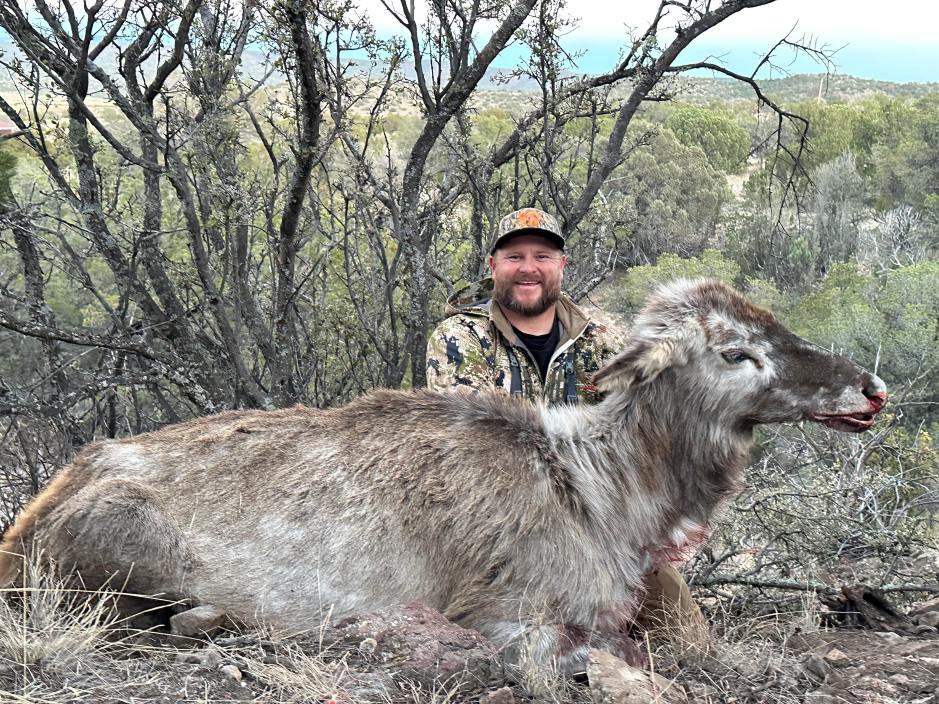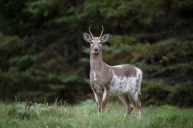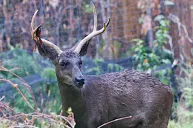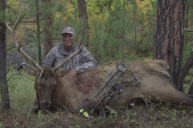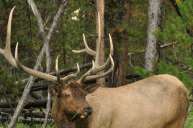When most of us head out for an elk hunt, we're ecstatic if we can get a trophy bull with a massive rack or a nice healthy cow to fill our freezer. One New Mexico hunter, Corey Sexton, recently harvested an even more incredible animal on his elk hunt: a piebald.
Corey Sexton, 37, has been hunting since he was six years old, and guiding hunts since he was 18. While he spent thirteen years working in underwater welding, he eventually returned to hunting and, now, he owns his own outfitter, LOETH, LLC., which offers guided hunts throughout New Mexico.
However, despite spending literal decades in the field, he had never seen a piebald elk until this winter.
While out scouting and glassing in New Mexico, Sexton spotted a beautiful piebald cow with patchy, brown, and white fur. Sexton told Wide Open Spaces that her mottled coat camouflaged fantastically with the dry, grassy New Mexico environment. He believes the camouflage could have been why no one else had spotted her yet, be they hunters or predators: "I could see how she had been overlooked for so long," he said.
Piebaldism, also known as partial leucism, is a genetic pigmentation disorder that causes cells to develop incorrectly, making them incapable of producing pigment, or color. Fully leucistic animals are all white, though unlike albinos their eyes are normal colors. In partially leucistic animals, or piebalds, not every cell is defective, giving the animals their patchy, white and black, or brown, coloring. Piebaldism is rare, and can affect species of birds, fish, and mammals, including ungulates like deer, moose, and elk.
Piebaldism is understandably rare, and many of us would be lucky enough to even see a piebald animal, let alone get the opportunity to hunt one. As soon as Sexton spotted the piebald cow, he knew he wanted to fill his tag with her.
What he didn't know was that it would take three days to do it.
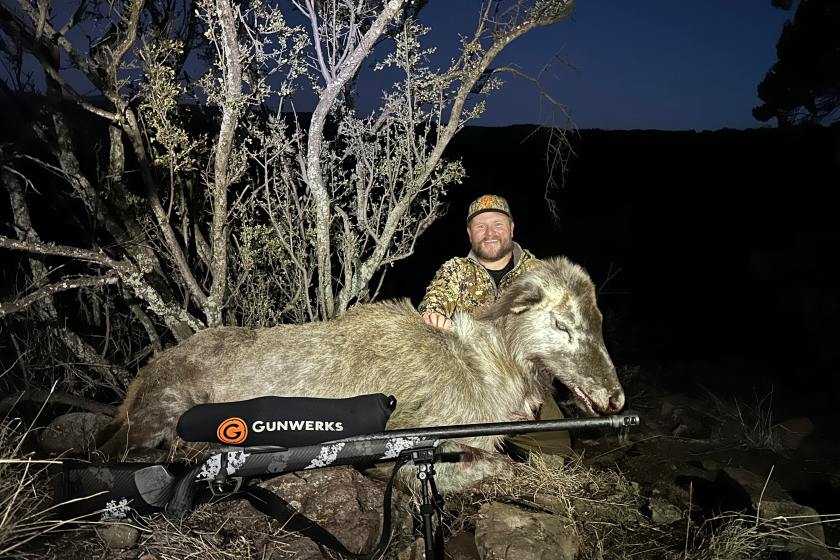
Corey Sexton
With the help of Trenton Small, William VanHuss, and James Lott, Sexton watched and waited patiently for the opportunity to shoot the cow. The team had to move carefully so they didn't pressure the herd. "I absolutely did not want to push [the piebald cow's] herd away and have her become unavailable, never to be seen again," he said.
Luckily, on the third day, the team spotted a herd of elk, the piebald cow with them. She was positioned in front of a juniper tree, the green tree contrasting with her fur enough for Sexton to get a shot. He lined her up in her scope and, once he could hold steady, took a 525-yard shot with his Gunwerks 28 Nosler.
The piebald dropped.
Sexton told Wide Open Spaces that "walking up to her afterward was indescribable, better than cloud nine. I never thought I would see such a unique animal, much less harvest and lay my hands on one."
He plans on having a full-body mount of the piebald done at the Wildlife Art Studio, and is sending the teeth in to be aged. The cow had very few teeth left, and Sexton guesses that she was around 15 years old.
The odds of the piebald mutation gene elk is 1 in 100,00, according to Colorado Parks and Wildlife (CPW). With just over 100,000 elk in New Mexico, you'd think the piebald cow that Sexton harvested would be the only piebald in the state, going strictly off statistics.
But Sexton thinks he may have gotten sight of another one. There was a bull in the same herd as the piebald cow that had some white coloration, though he wasn't as colored as the piebald cow. "We will definitely be keeping our eyes peeled for him," Sexton tells Wide Open Spaces. He would love to be able to help a client harvest him. "All wins are the same, no matter if it's for myself, my family, or my clients."
READ MORE: Rare Piebald Whitetail Deer Herd Caught on Video
